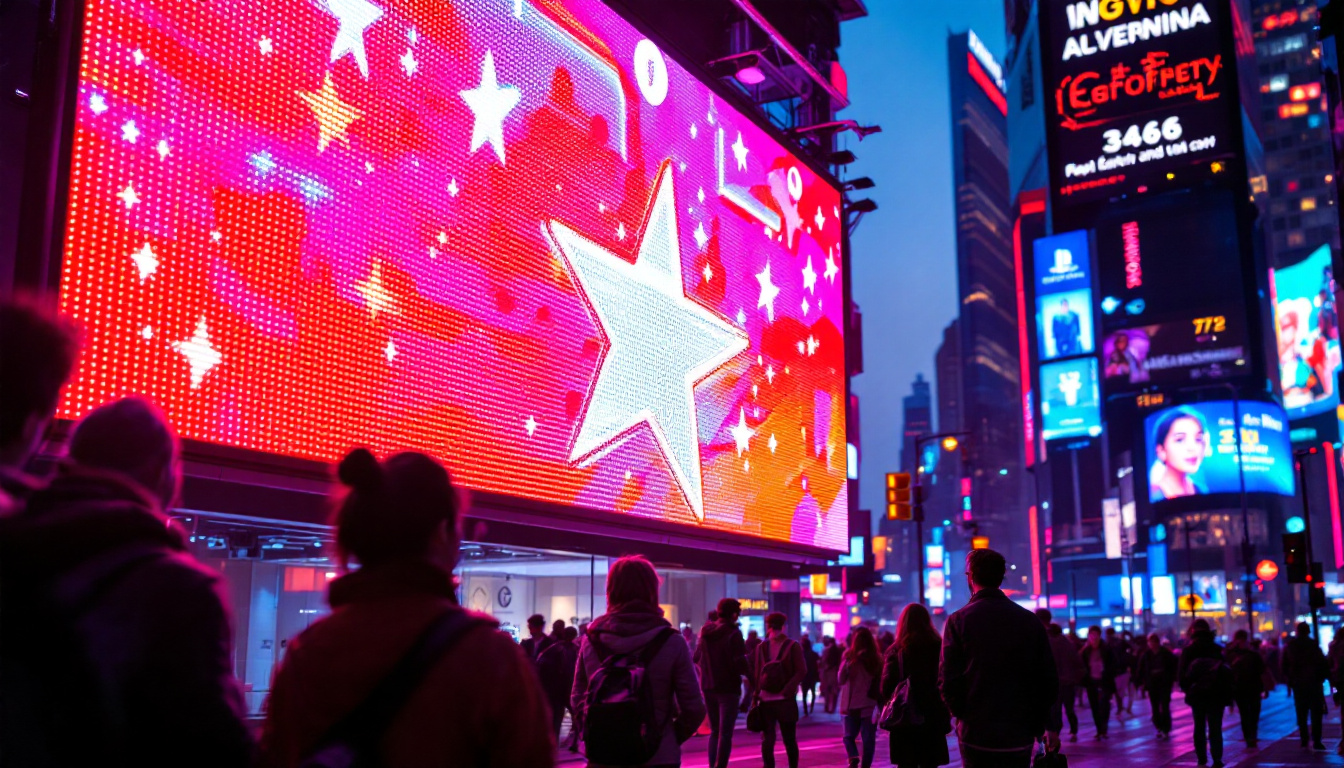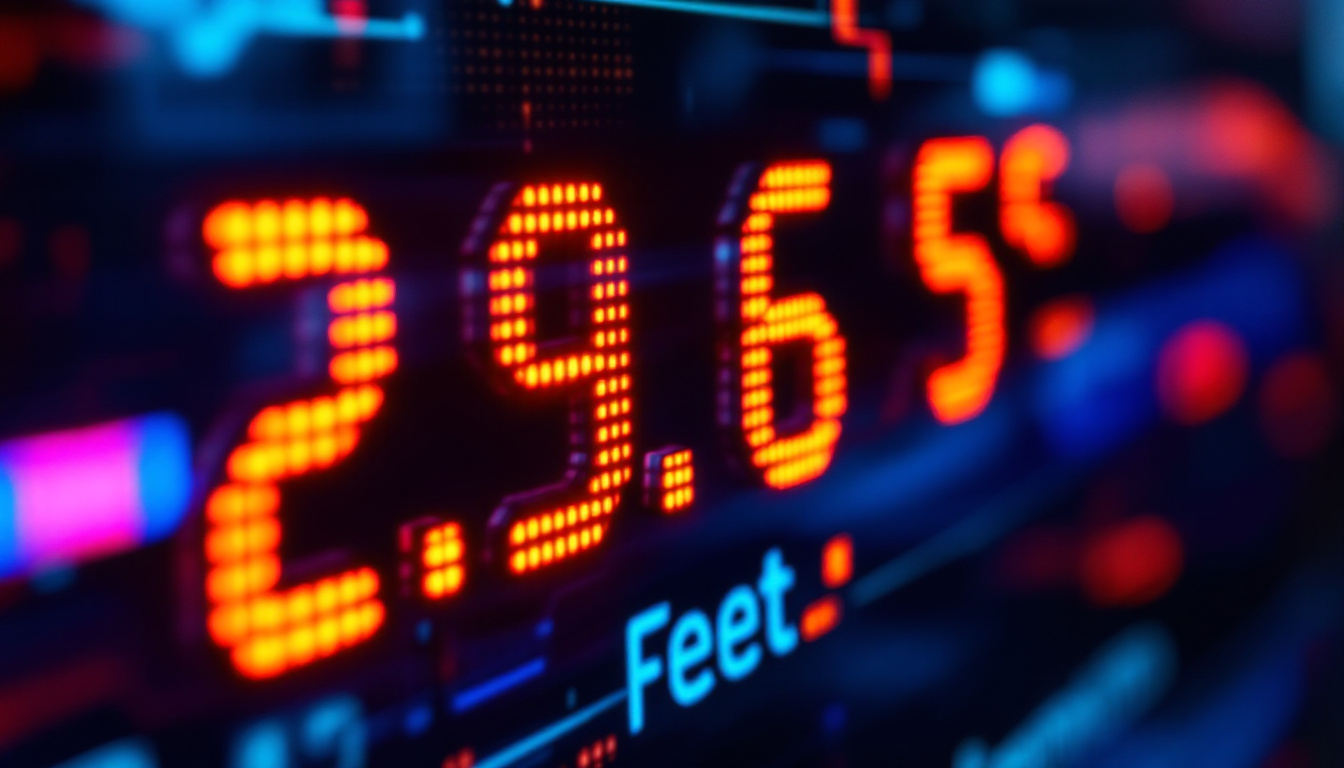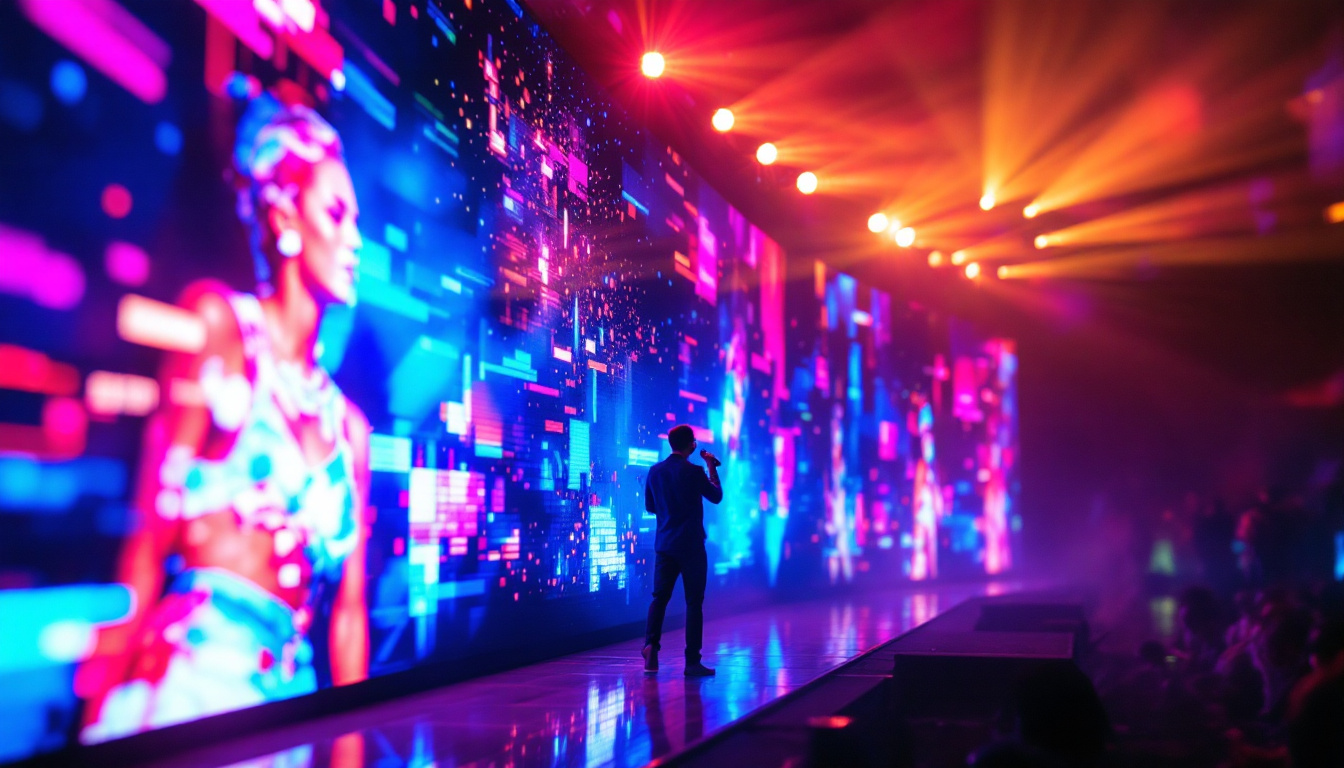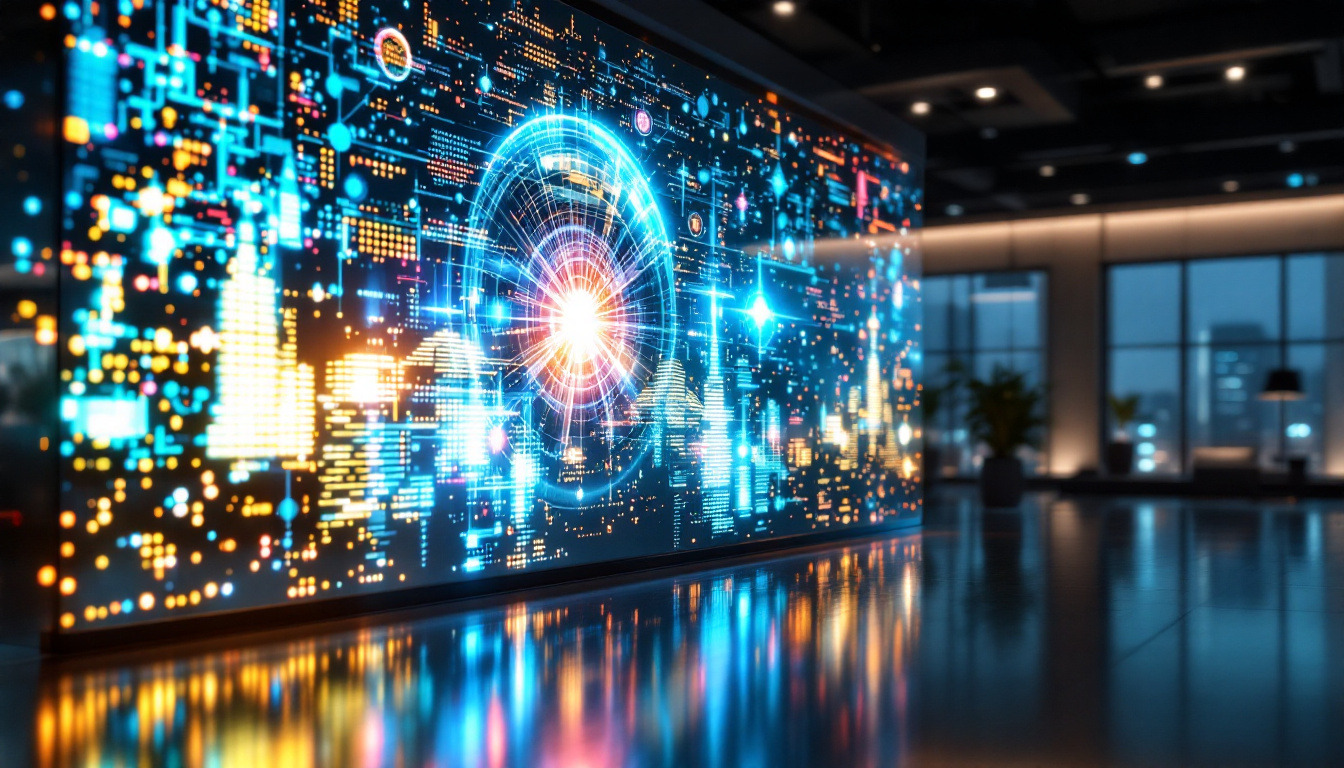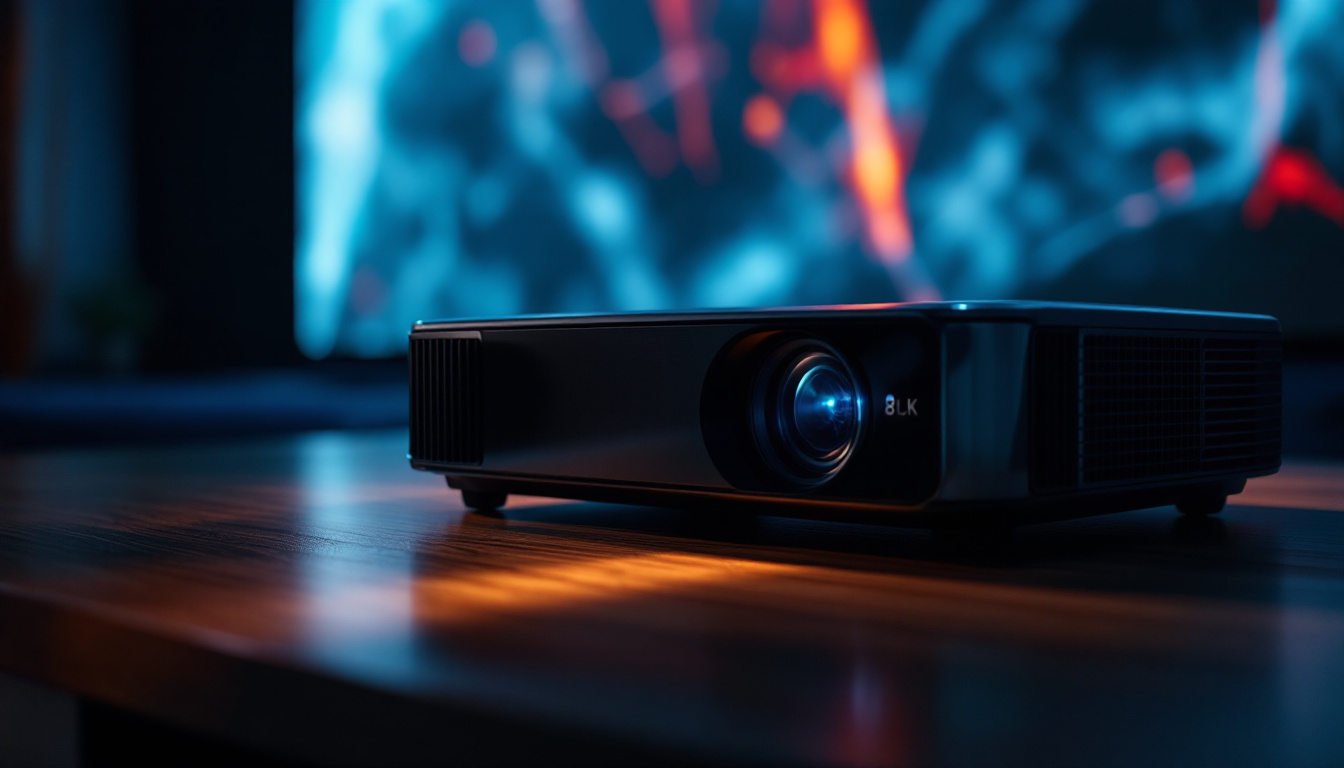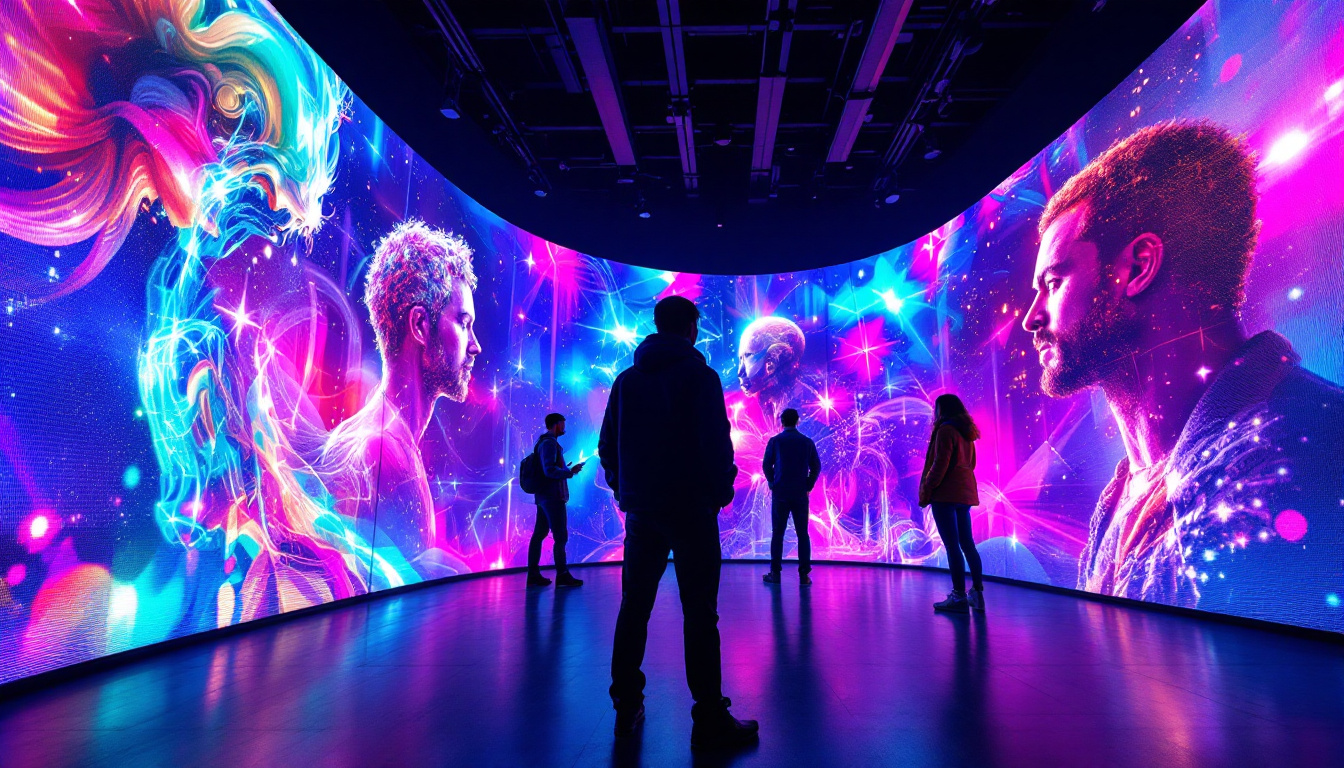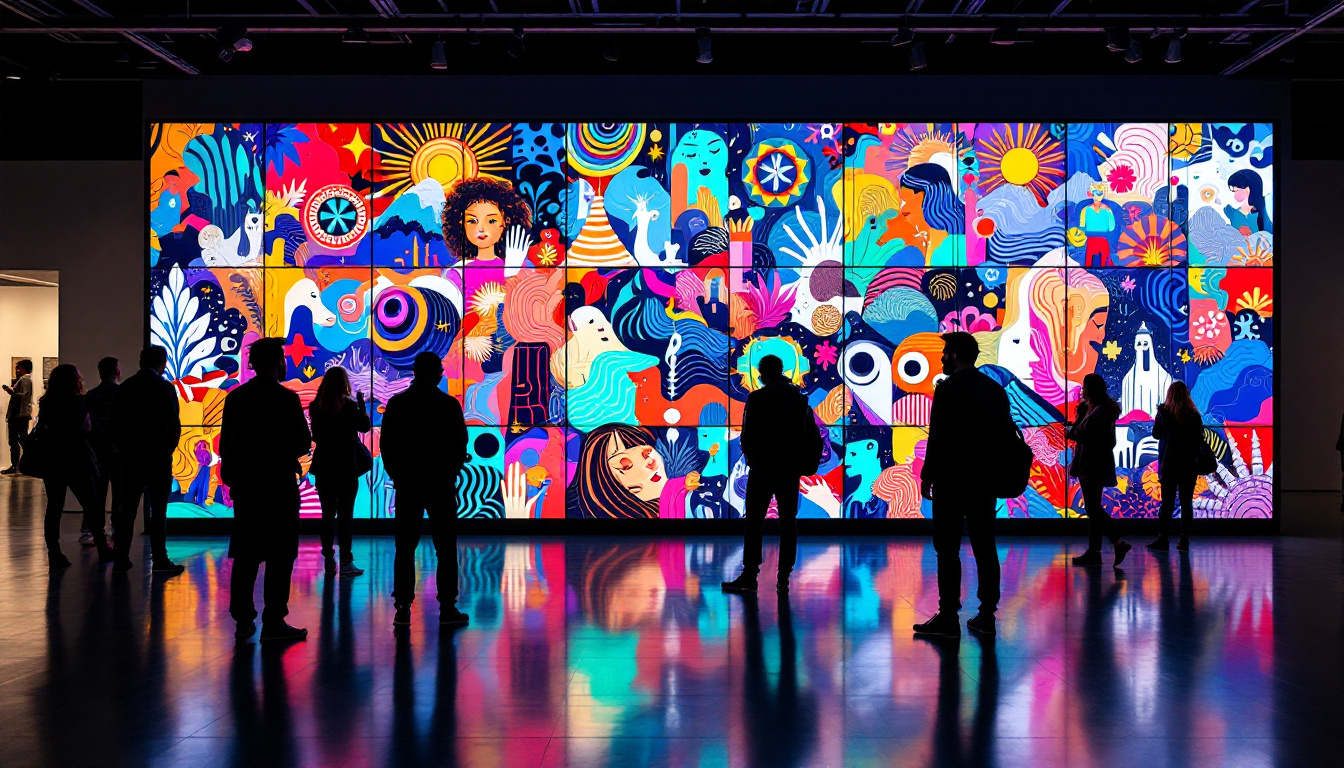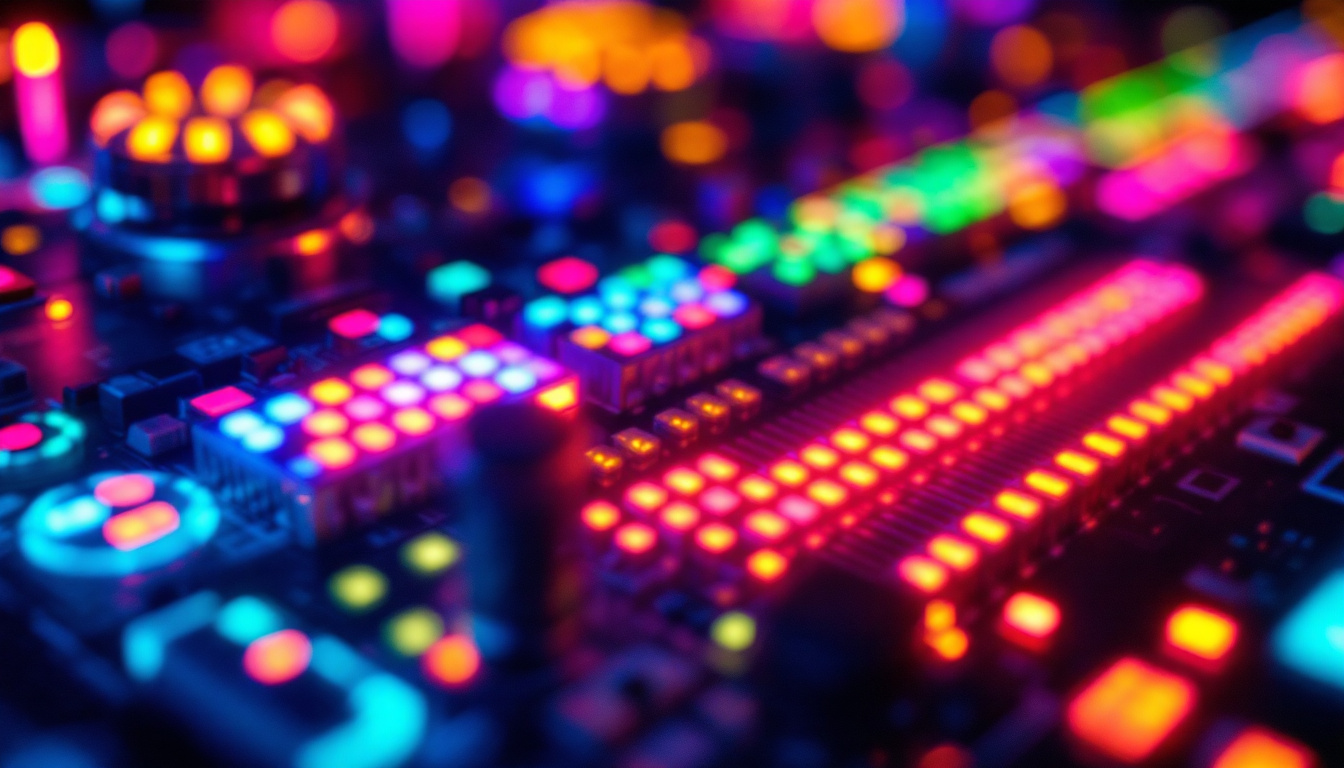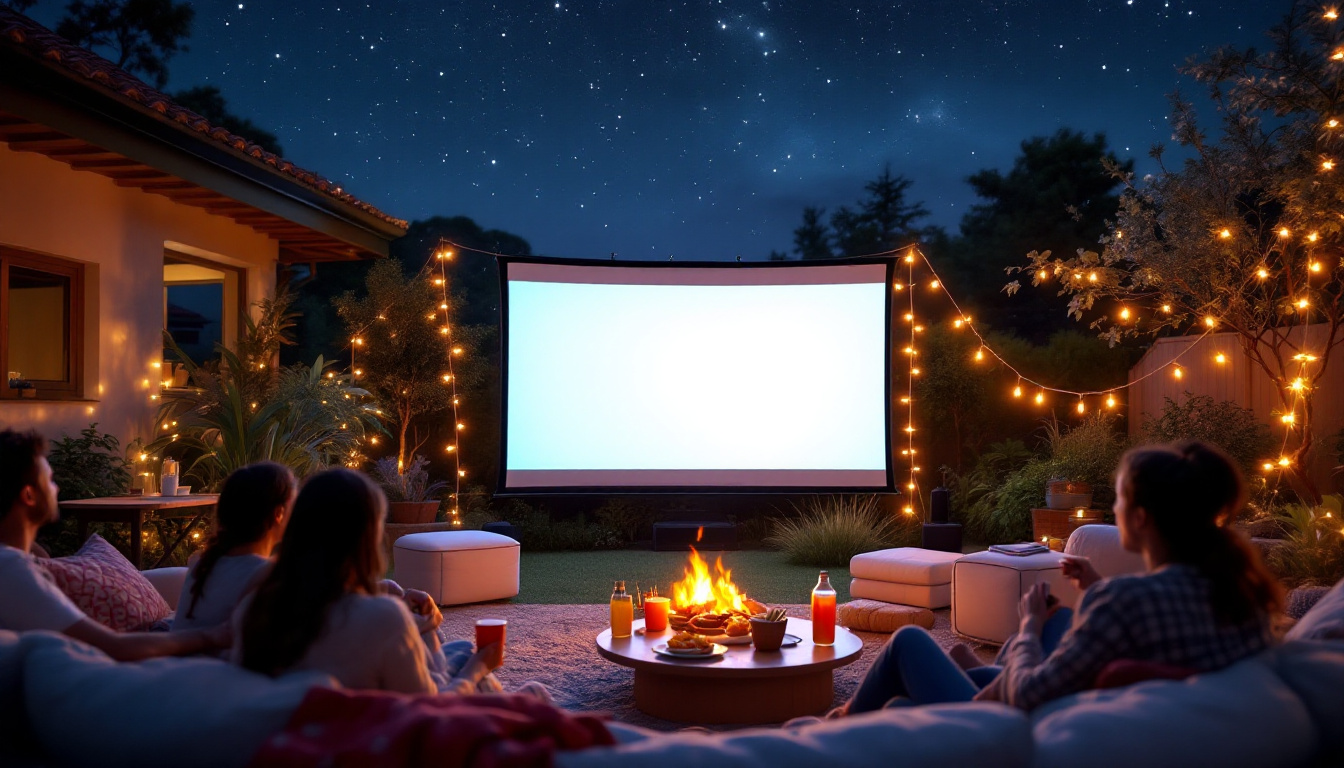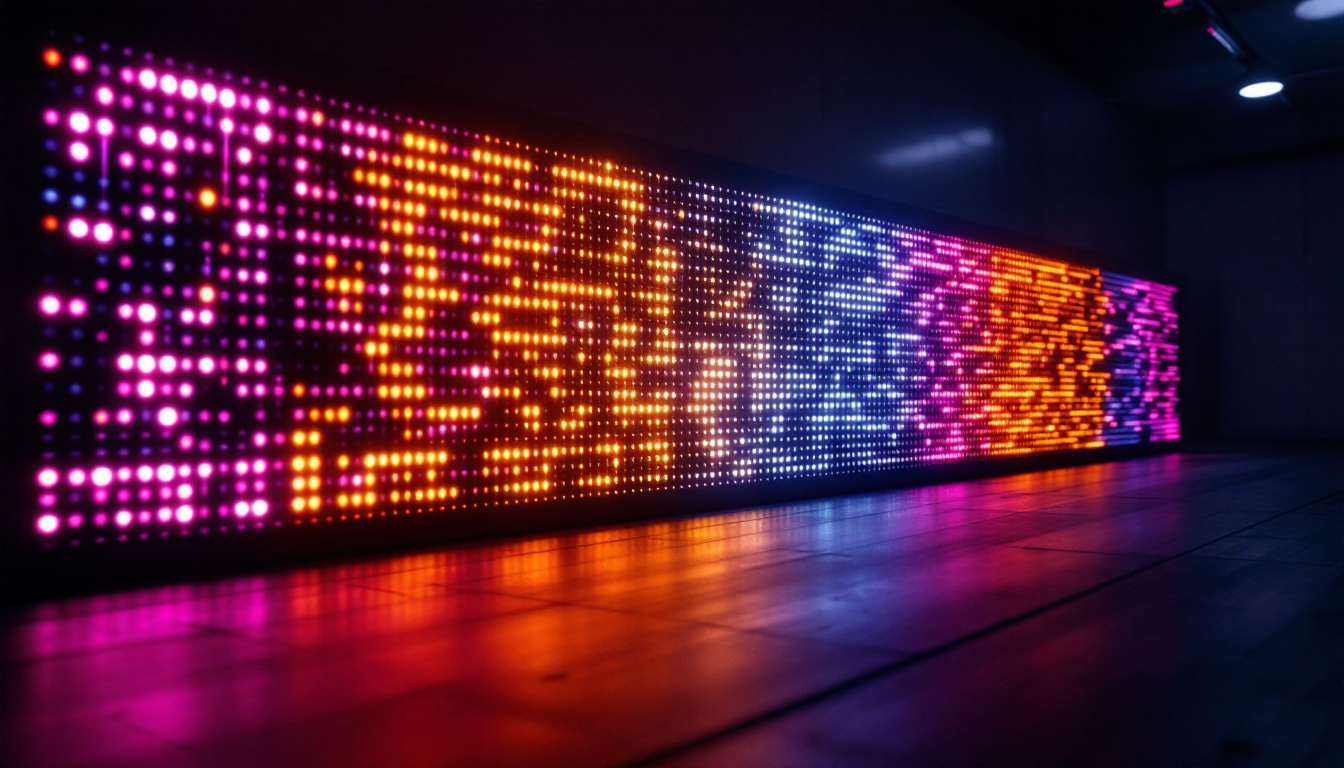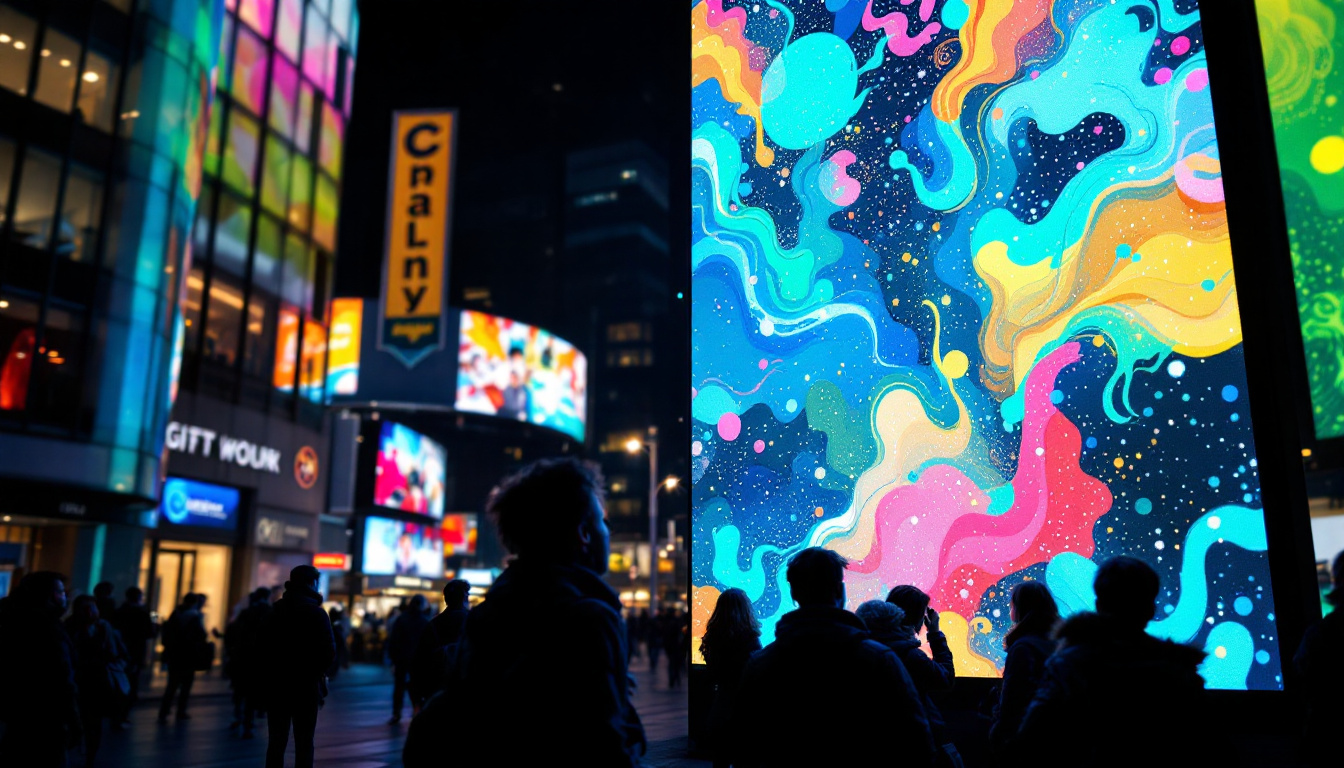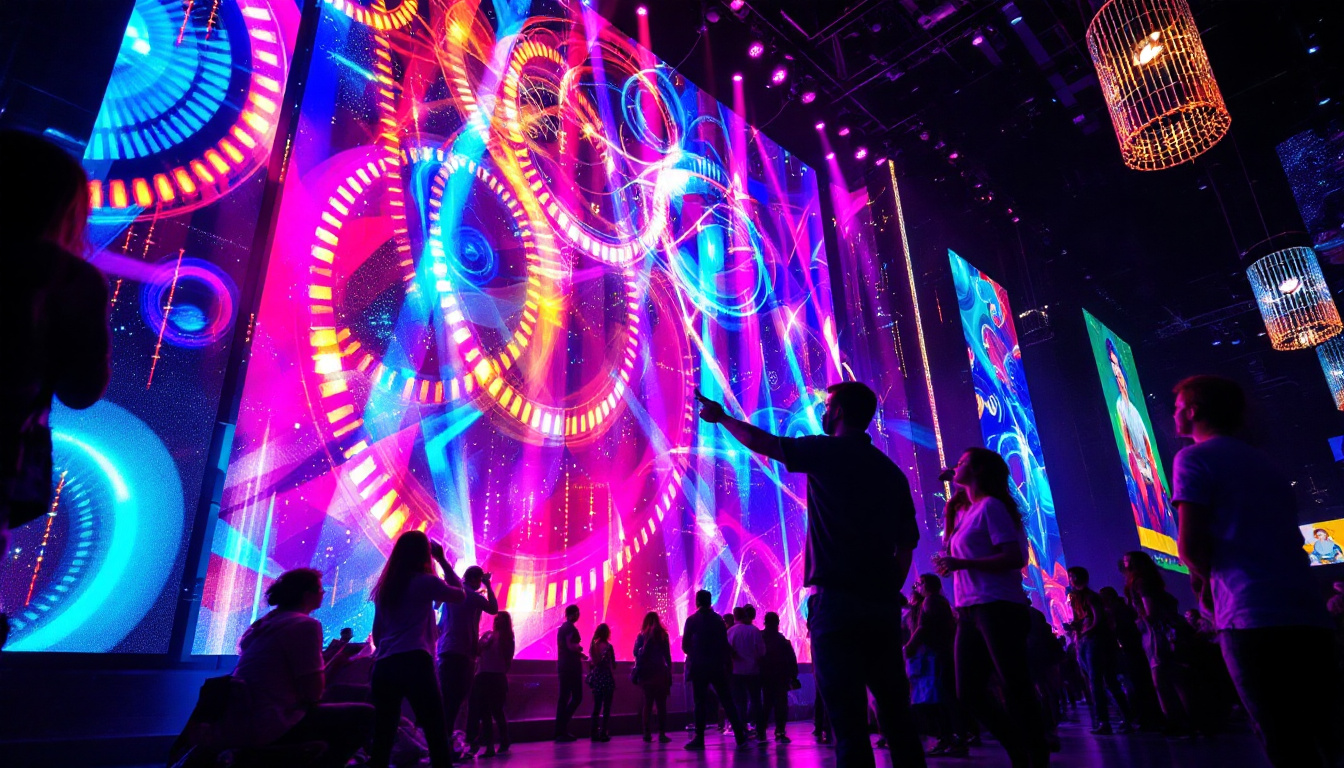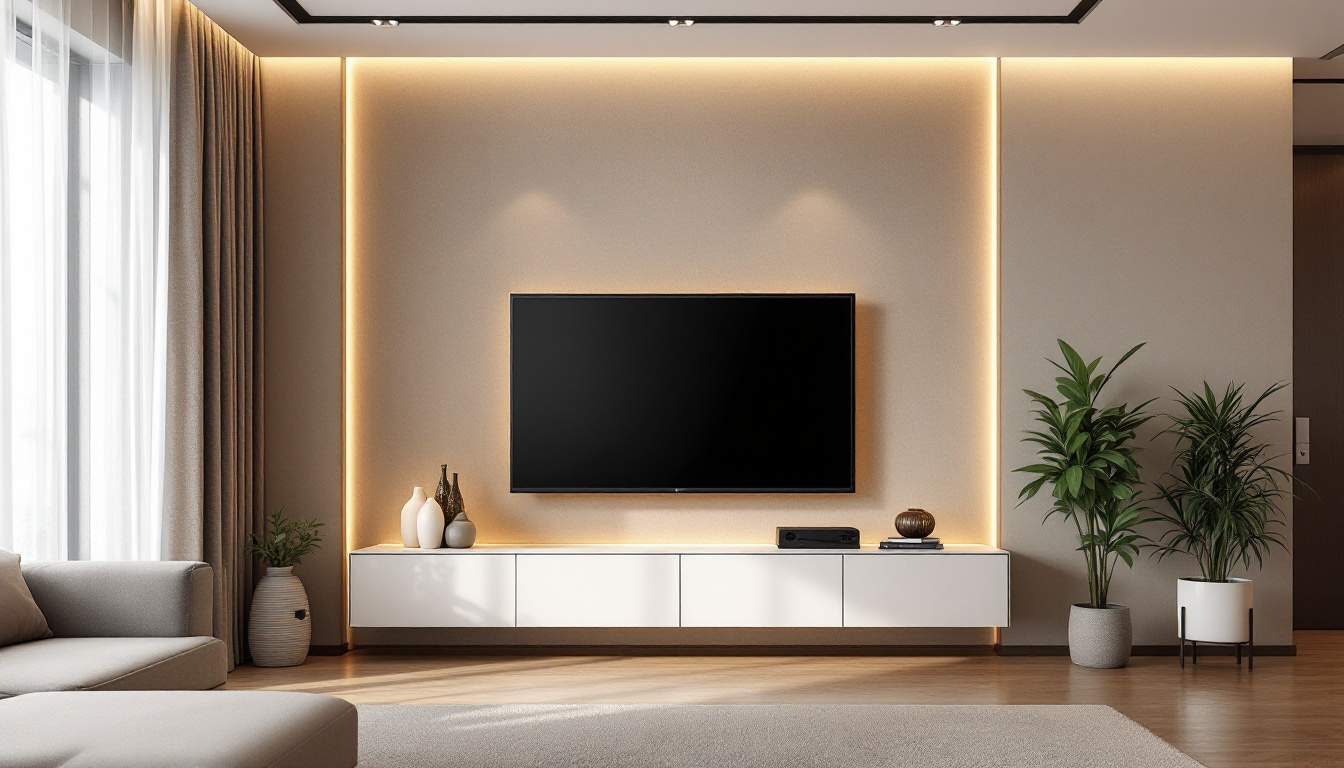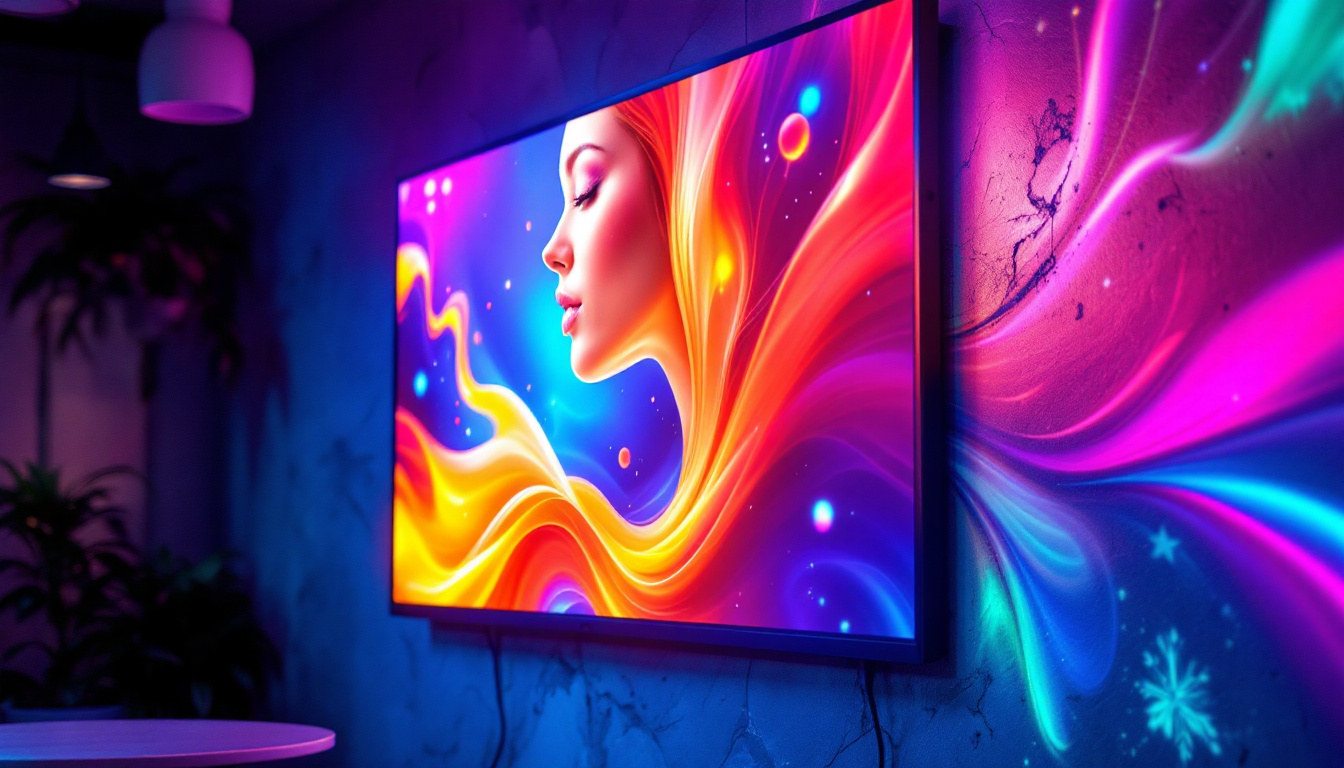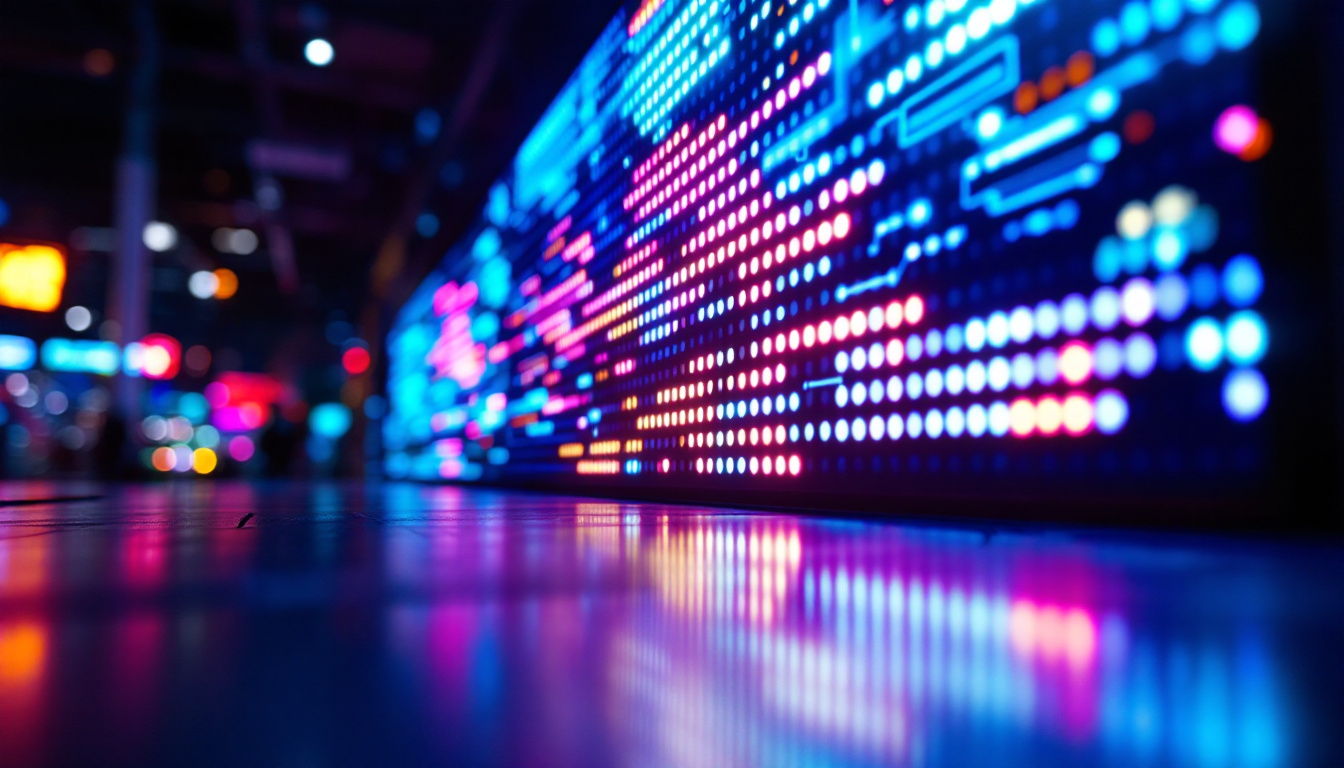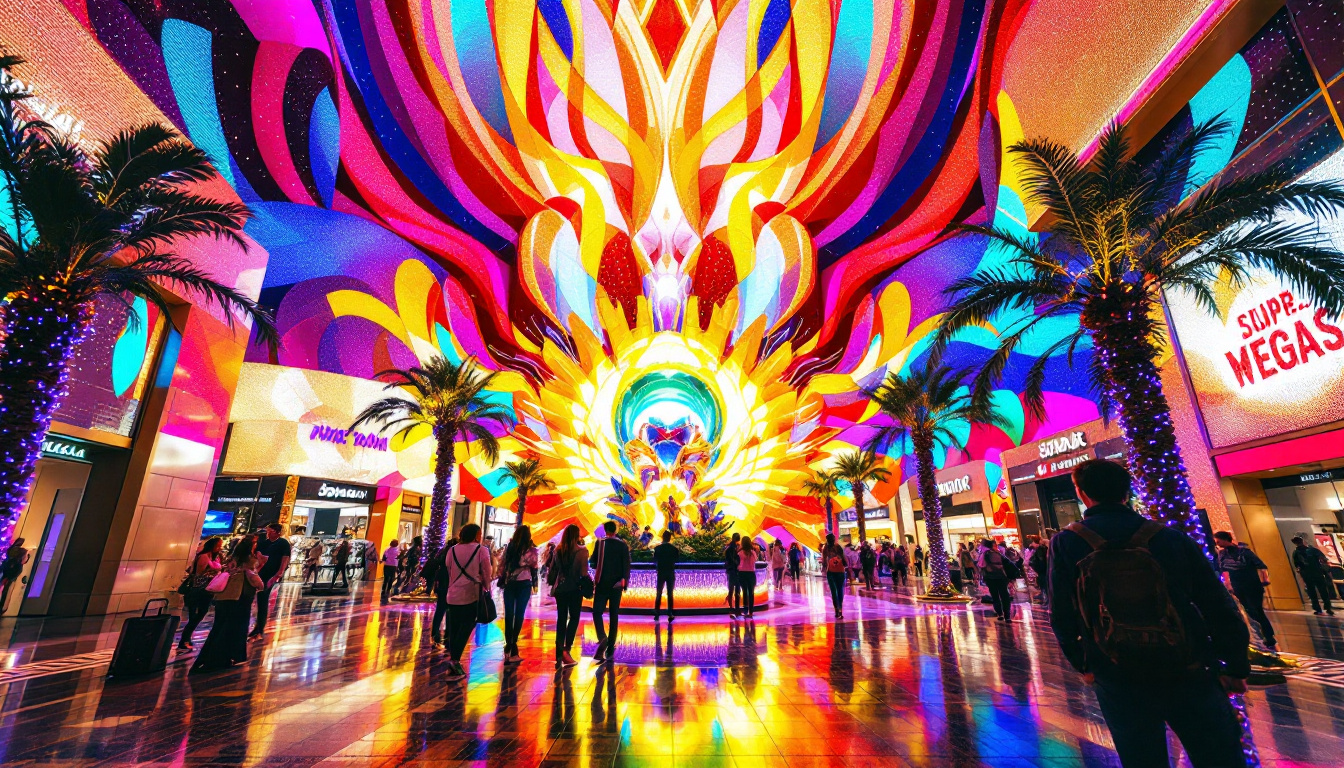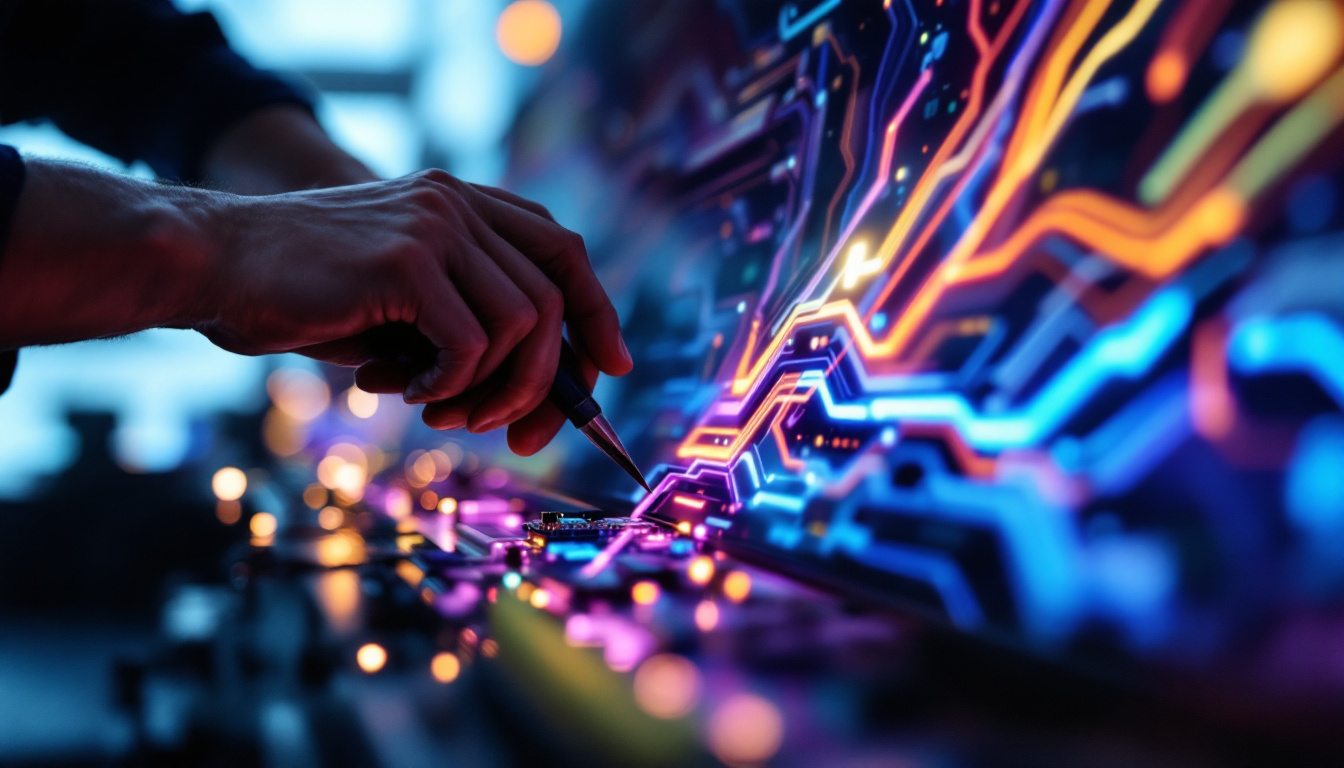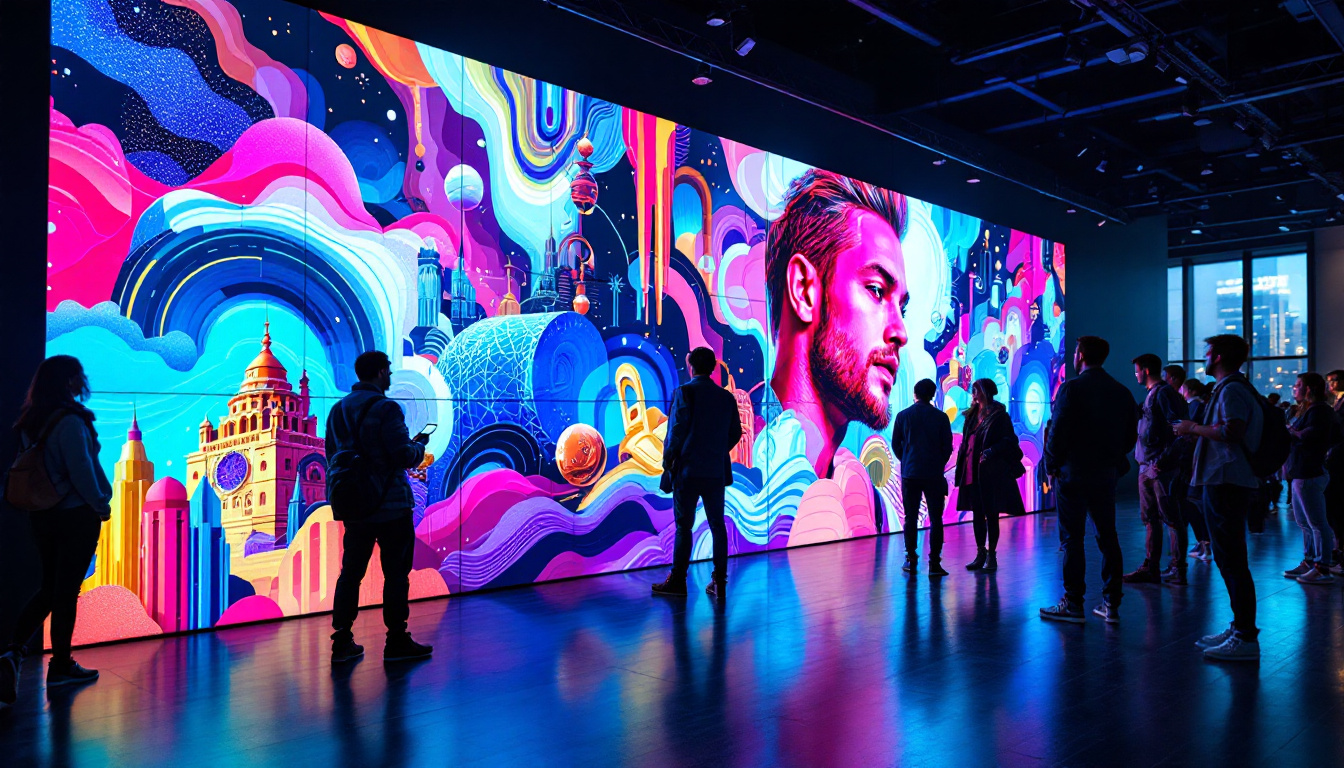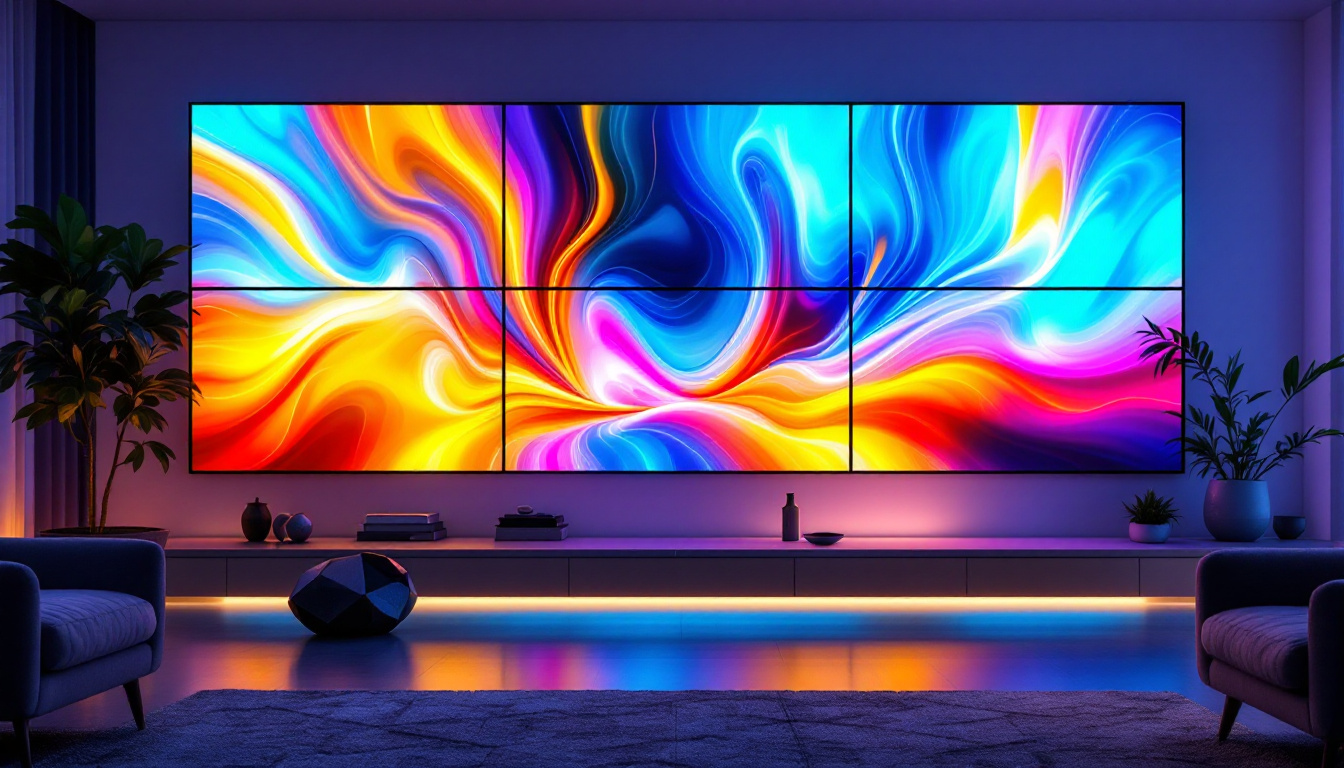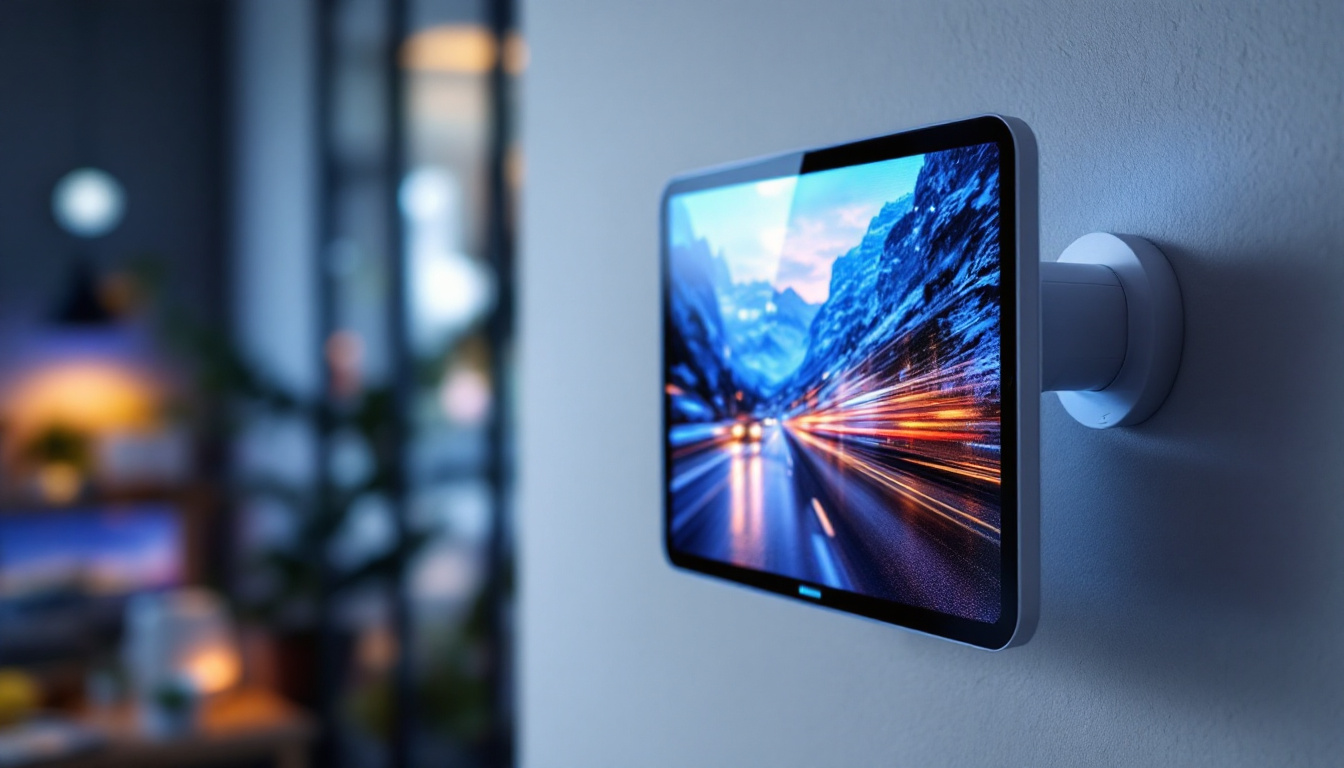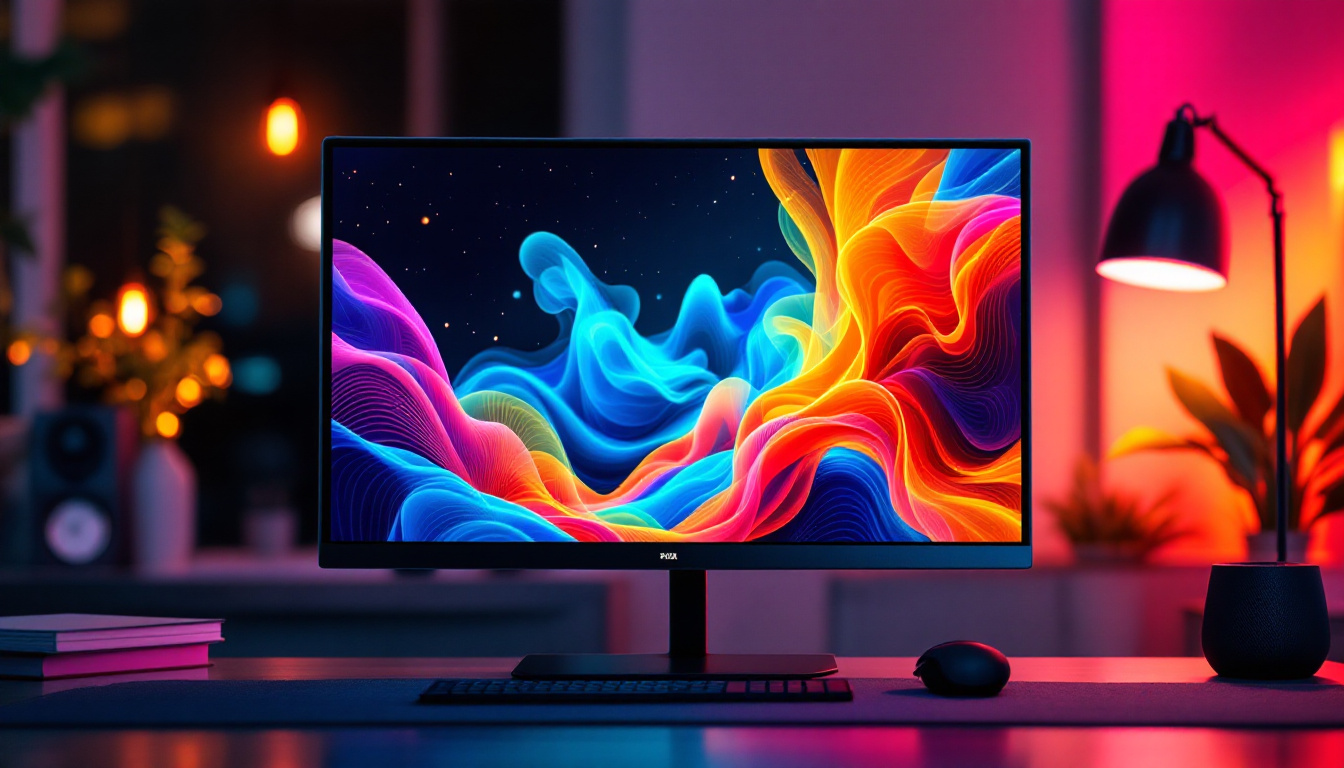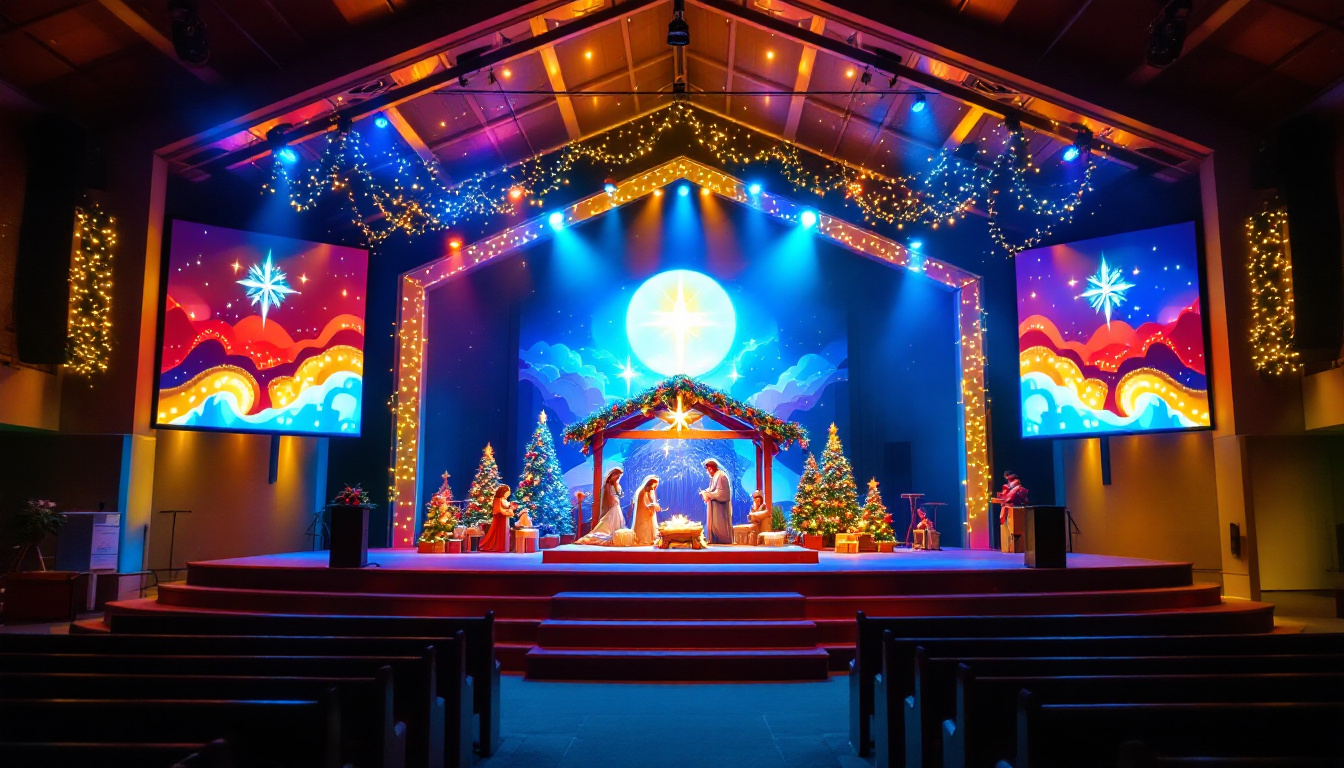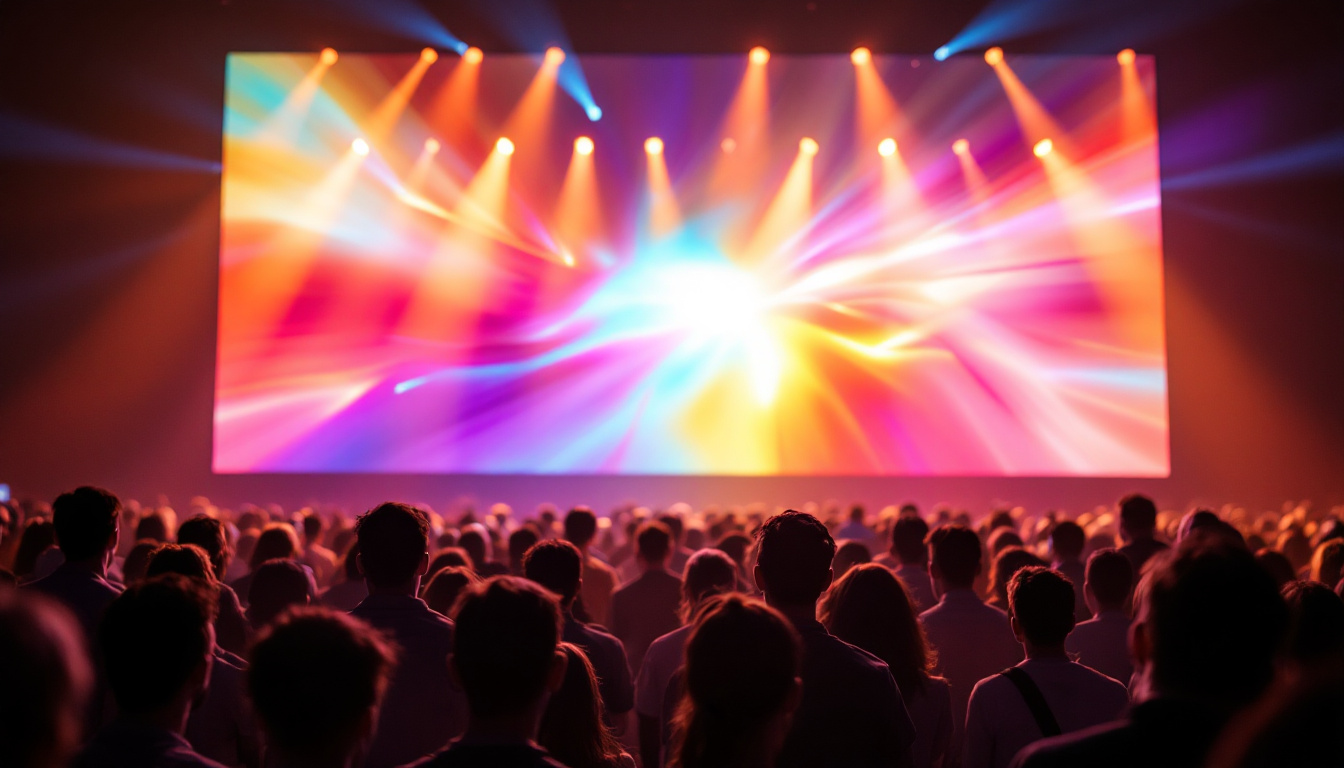In the fast-paced world of advertising, visual impact is paramount. One of the most effective ways to capture attention is through the use of LED displays. These vibrant screens have transformed the advertising landscape, offering dynamic content that can be updated in real-time. This article delves into the intricacies of LED displays, exploring their technology, benefits, applications, and future trends.
Understanding LED Technology
Light Emitting Diodes (LEDs) are semiconductor devices that emit light when an electric current passes through them. This technology is the backbone of LED displays, which are composed of numerous tiny LEDs arranged in a grid. The combination of red, green, and blue (RGB) LEDs allows for a full spectrum of colors, enabling vivid and engaging displays. The efficiency of LEDs is one of their standout features; they consume significantly less energy compared to traditional incandescent bulbs, making them not only a cost-effective choice but also an environmentally friendly option. With advancements in technology, the lifespan of LEDs has also increased, often lasting tens of thousands of hours, which reduces the need for frequent replacements and further contributes to sustainability.
How LED Displays Work
LED displays operate by controlling the intensity of the light emitted from each individual LED. By varying the brightness of the RGB components, an LED display can produce a wide range of colors and images. This pixel-based technology allows for high resolution and clarity, making it suitable for both indoor and outdoor advertising. The intricate design of these displays includes a driver circuit that regulates the current flowing to each LED, ensuring that colors are rendered accurately and consistently. This precision is crucial for applications such as digital signage, where brand colors must be represented faithfully to maintain visual identity.
Each pixel in an LED display is made up of multiple LEDs, which can be turned on or off independently. This capability allows for dynamic content, such as animations and videos, to be displayed seamlessly. The result is a visually striking advertisement that can capture the attention of passersby. Furthermore, the rapid refresh rates of LED displays enable smooth transitions and effects, enhancing viewer engagement. As technology continues to evolve, features such as interactive capabilities and touch sensitivity are being integrated into LED displays, opening up new avenues for user interaction and experience.
Types of LED Displays
LED displays come in various types, each tailored for specific applications. The most common types include:
- Outdoor LED Displays: Designed to withstand the elements, these displays are typically brighter and more durable, making them ideal for billboards and large-scale advertising. They often feature protective coatings to guard against UV rays and moisture, ensuring longevity even in harsh weather conditions.
- Indoor LED Displays: These displays are often used in shopping malls, airports, and event venues. They offer high resolution and are designed for close viewing. The pixel pitch in indoor displays is generally smaller, allowing for clearer images at shorter viewing distances, which is essential in crowded spaces.
- Transparent LED Displays: A newer innovation, these displays allow light to pass through, making them suitable for storefronts and creative advertising solutions. Their unique design enables businesses to maintain visibility into their stores while simultaneously showcasing promotional content, creating an eye-catching blend of functionality and aesthetics.
The Benefits of LED Displays
LED displays offer numerous advantages over traditional advertising methods. Their unique characteristics make them a preferred choice for many businesses looking to enhance their marketing strategies.
High Visibility and Brightness
One of the most significant benefits of LED displays is their brightness. Unlike traditional LCD screens, LED displays can be seen clearly in direct sunlight, making them ideal for outdoor advertising. This high visibility ensures that advertisements reach a larger audience, increasing the chances of engagement. Moreover, the vibrant colors and sharp contrast of LED technology capture attention more effectively than standard displays, allowing brands to stand out in crowded environments. Whether it’s a bustling city street or a large-scale event, the ability to command attention is crucial for successful marketing.
Dynamic Content Capabilities
LED displays allow for real-time content updates, enabling advertisers to change messages quickly and efficiently. This flexibility is particularly beneficial for promotions, events, and time-sensitive announcements. Businesses can tailor their messages to specific audiences or times of day, maximizing impact. For instance, a restaurant can showcase its daily specials during lunch hours and switch to evening promotions as the dinner crowd arrives. Additionally, the ability to incorporate animations and video content can create a more engaging viewer experience, leading to higher retention rates and increased customer interaction.
Energy Efficiency
Compared to traditional lighting solutions, LED technology is significantly more energy-efficient. This not only reduces operational costs but also minimizes the environmental impact. Many businesses are now prioritizing sustainability, and LED displays align with these values by consuming less power while delivering superior performance. Furthermore, the longevity of LED displays means that they require less frequent replacements, further contributing to reduced waste and lower overall costs. As companies strive to enhance their corporate social responsibility, investing in LED technology can be a strategic move that reflects their commitment to both innovation and environmental stewardship.
Versatility and Customization
Another remarkable advantage of LED displays is their versatility. They can be configured in various sizes and shapes to fit different environments and branding needs. From large billboards to smaller screens in retail spaces, LED technology can adapt to any setting. Additionally, many LED displays offer customizable features, such as interactive touch capabilities, which can enhance user engagement. This level of customization allows businesses to create unique advertising experiences that resonate with their target audience, fostering brand loyalty and encouraging repeat visits.
Cost-Effectiveness Over Time
While the initial investment in LED displays may be higher than traditional advertising methods, the long-term savings are significant. With lower energy consumption and reduced maintenance costs, businesses can see a return on investment that justifies the upfront expenditure. Moreover, the ability to update content without the need for physical materials, such as banners or posters, further reduces costs associated with printing and installation. As companies look to optimize their marketing budgets, the cost-effectiveness of LED displays becomes an increasingly compelling reason to make the switch.
Applications of LED Displays
The versatility of LED displays makes them suitable for a wide range of applications across various industries. From retail to entertainment, their impact is felt in numerous sectors.
Retail Advertising
In the retail sector, LED displays have become a staple for attracting customers. They can showcase promotions, new products, and seasonal sales in eye-catching formats. Retailers often use indoor LED displays to create engaging in-store experiences, encouraging customers to linger longer and make purchases.
Transportation Hubs
Airports, train stations, and bus terminals utilize LED displays for information dissemination. Flight schedules, announcements, and advertisements coexist on these screens, providing travelers with essential information while promoting brands. The ability to update content in real-time is particularly advantageous in these dynamic environments.
Event Venues
LED displays are increasingly common in concert halls, sports arenas, and conference centers. They enhance the audience experience by displaying live feeds, scores, and advertisements. The immersive nature of LED technology captivates audiences, making events more memorable.
Future Trends in LED Advertising Displays
The landscape of LED advertising displays is continually evolving, driven by technological advancements and changing consumer preferences. Several trends are shaping the future of this industry.
Integration with Smart Technology
As the Internet of Things (IoT) continues to expand, LED displays are becoming smarter. Integration with smart technology allows for data-driven advertising, where content can be tailored based on real-time analytics. For instance, displays can change based on the demographics of the audience or the weather conditions, creating a more personalized advertising experience.
Interactive Displays
Interactive LED displays are gaining traction, allowing consumers to engage directly with advertisements. Touch screens, motion sensors, and augmented reality features create immersive experiences that not only attract attention but also encourage participation. This level of engagement can lead to higher conversion rates and brand loyalty.
Advancements in Display Resolution
As technology progresses, the resolution of LED displays continues to improve. High-definition and ultra-high-definition displays are becoming more common, providing sharper images and more detailed content. This trend is essential for maintaining viewer interest and ensuring that advertisements stand out in a crowded marketplace.
Challenges and Considerations
While LED displays offer numerous benefits, there are also challenges and considerations to keep in mind. Understanding these factors can help businesses make informed decisions when investing in LED advertising solutions.
Initial Investment Costs
The initial cost of purchasing and installing LED displays can be significant. While the long-term benefits often outweigh these costs, businesses must carefully evaluate their budgets and projected return on investment. It is essential to consider factors such as location, audience reach, and content strategy before making a decision.
Maintenance and Upkeep
LED displays require regular maintenance to ensure optimal performance. This includes cleaning, software updates, and potential repairs. Businesses must factor in these ongoing costs when budgeting for LED displays, as neglecting maintenance can lead to decreased visibility and effectiveness.
Regulatory Compliance
In many regions, there are regulations governing outdoor advertising, including restrictions on brightness levels and content. Businesses must be aware of these regulations to avoid fines and ensure compliance. Working with experienced professionals can help navigate these complexities and ensure that advertising strategies align with local laws.
Conclusion
LED displays have revolutionized the advertising industry, offering unparalleled visibility, flexibility, and engagement. As technology continues to advance, the potential applications and capabilities of LED displays will only expand. Businesses looking to enhance their advertising strategies should consider the benefits of LED technology, while also being mindful of the associated challenges.
In a world where visual impact is crucial, LED displays stand out as a powerful tool for capturing attention and driving consumer engagement. By understanding the technology, benefits, and future trends, businesses can leverage LED displays to create compelling advertising campaigns that resonate with their target audiences.
Discover LumenMatrix’s Innovative LED Display Solutions
Ready to elevate your advertising strategy with cutting-edge LED technology? Look no further than LumenMatrix, a leader in LED display innovation. Our extensive range of solutions, including Indoor and Outdoor LED Wall Displays, Vehicle LED Displays, LED Poster Displays, LED Sports Displays, Floor LED Displays, Custom LED Displays, All-in-One LED Displays, and LED Transparent Displays, are designed to captivate your audience and amplify your message. Experience the transformative power of our LED display modules and join the revolution in visual communication. Check out LumenMatrix LED Display Solutions today and see your brand in a new light!

